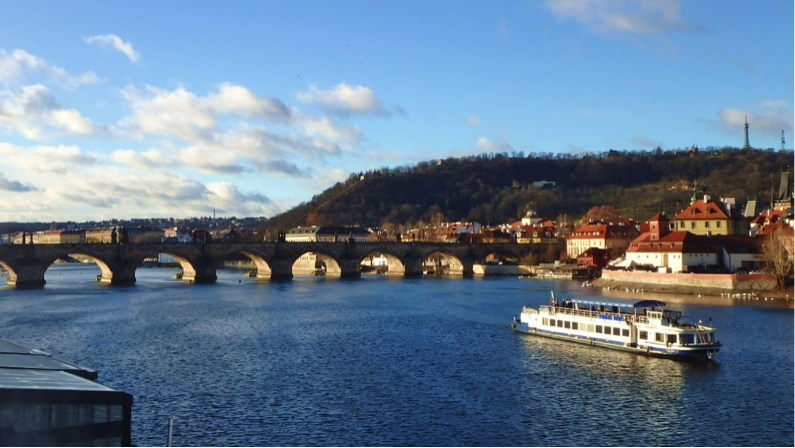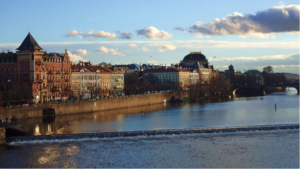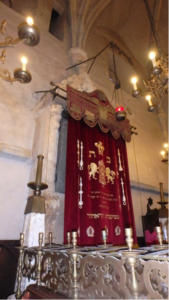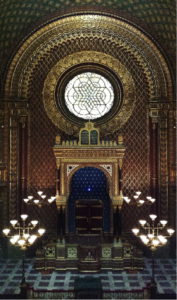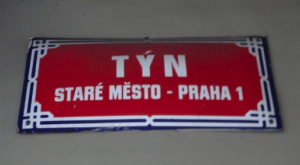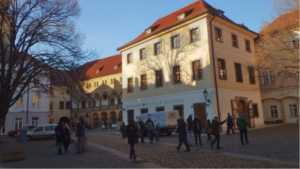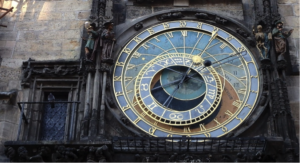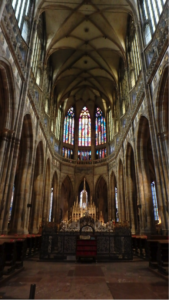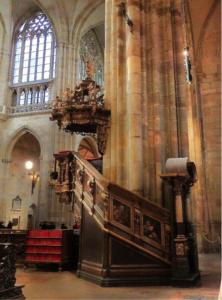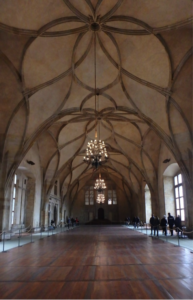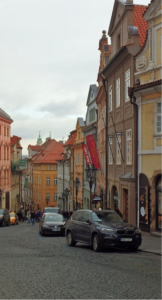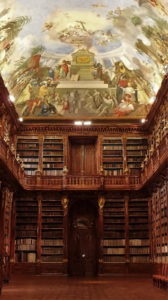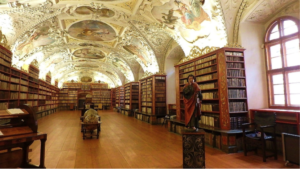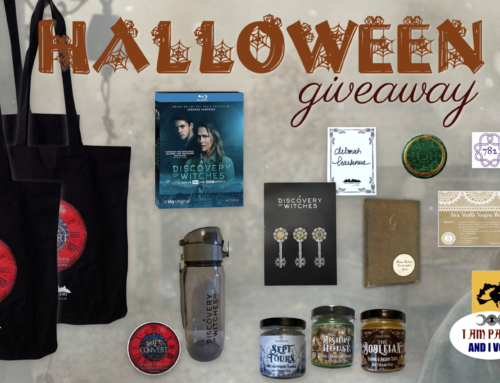The driver didn’t speak English and I didn’t speak Czech, so this was going to be an interesting ride to the hotel. It was only early evening but I’d been traveling for the better part of the day; tired and hungry, I’d skipped impatient/frazzled mode and landed right into auto-pilot. I knew enough tourist Czech to respond to basic questions having memorized a few phrases before my trip so long as they were spoken to me s-l-o-w-l-y and repeatedly, but naturally got flustered when it came time to use them. Determined to be polite, I carried on with the conversation. While I remember most of my responses, I’m not entirely sure what his questions were so I’m guessing here, but as he seemed more confused than insulted, I breathed out a sigh of relief when I stepped out of the car.
Driver: “Jak se máte?” (How are you?)
Me: “Yes, I’m from San Francisco, California.”
Driver: (A brief pause.) “Setkáte se zde s přáteli?” (Are you meeting friends here?)
Me: “Oh, the usual tourist things as well as to see a few of the locations mentioned in this trilogy I read.”
Driver: “Nerozumím. Prosím, zopakujte to ještĕ jednou.” (I don’t understand. Can you please repeat that?)
Sounds like a conversation among daemons 😀
Despite a rather inauspicious beginning, my trip took a decided turn for the better the next morning. I was finally in Prague and I wanted to see as much of it as I could in the short amount of time I was here. I wanted to indulge this need to travel back in time—March 1591, to be exact—a need brought on by having read and reread the All Souls Trilogy.
Winter lent the sunlight a gleaming quality, and it was a very sunny day even if the temperature outside hovered between the 20s and the 30s throughout. Still, both rain and snow were present in the day’s forecast, so I made sure I had my umbrella with me. After bundling up, I headed out the door walking from my hotel in the Malá Strana and crossing the Mánesův most (bridge) into Old Town. I saw my first proper view of the iconic Charles Bridge and felt that shiver of excitement that so often comes with the first day of exploring a new place. I was on my way to Josefov for a tour of the Jewish Quarter, eager to start my time travel.
The Jewish Quarter
“Then we crossed over a wide street and passed through a gate into the Jewish Town. More than five thousand Jews lived in this small enclave smashed between the industrial riverbank, the Old Town’s main square, and a convent. The Jewish Quarter was crowded—inconceivably so, even by London standards—with houses that were not so much constructed as grown, each structure evolving organically from the walls of another like the chambers in a snail’s shell.
We found Rabbi Loew via a serpentine route that made me long for a bag of bread crumbs to be sure we could find our way back. The residents slid cautious glances in our direction, but few dared to greet us. Those who did called Matthew “Gabriel.” It was one of his many names, and the use of it here signaled that I’d slipped down one of Matthew’s rabbit holes and was about to meet another of his past selves.” —Shadow of Night, Ch. 29
We’re met at the door of the Old-New Synagogue by two genial ladies who greeted our guide Hannah like an old friend, then took our tickets, swiped them over the reader for us and then gestured for us to walk on ahead. Navigating the narrow entrance and the short set of stairs, we made our careful way forward and down. Although Hannah spoke in a conversational tone, I noticed that my fellow tourists and I kept our voices low out of respect for our surroundings. Until that is, Hannah noticed a group of about four or five men to the right of the bimah (platform or pulpit) when she grew excited. “Do you see those men? They are descendants of Rabbi Loew and they are here visiting. This is very exciting for us.” Other tourist groups around us heard her and as one turned to see the cause for her excitement. It felt strange to watch other people – especially while they worshipped – but it seemed everyone was fascinated with the visitors, who calmly went about their business as if they weren’t aware of the sudden attention directed their way. They then formed a small circle and sang a song of celebration much to the delight of their audience.
The Jewish Quarter was indeed crowded, but I didn’t need breadcrumbs to find my way back when landmarks would do. There was a gaggle of several different languages being spoken simultaneously around me and the air smelled of baked goods with a fair number of people walking around eating trdelníks, a traditional Czech pastry made of rolled dough wrapped around a stick, grilled and then topped or filled with sugar, chocolate and other toppings or fillings. (Alas, I didn’t trust myself to navigate cobblestoned streets, take photos AND enjoy a pastry without falling over so I missed out on the pastry this time around.) Although it was relatively early in the morning, there were already several knots of fellow tourists abroad and trying to take a photograph of the Old-New Synagogue without someone walking into the frame proved to be impossible. I had booked a guided tour at the Information and Reservation Centre on Maiselova street, a few doors up from the Old-New Synagogue. The tour price included a local guide and admittance to the Old-New Synagogue, Maisel Synagogue, Pinkas Synagogue, Old Jewish Cemetery, Klausen Synagogue and Spanish Synagogue, and I had the opportunity to wander the Jewish Quarter after the tour. (Solo travellers take note: there’s a minimum number of guests required for the guided tour, so call ahead to make sure you can join a group.)
The Old Town
“Then go and see this weaver. I’ll be in the Ungelt, waiting.” Matthew brushed his lips against my cheek and was gone before he could have second thoughts.”—Shadow of Night, Ch. 29
“At the Ungelt, where the foreign merchants traded under the watchful eyes of the customs officer, the merchants looked at Maisel with open hostility.”—Shadow of Night, Ch. 29
The Ungelt (not to be confused with the restaurant or the jazz club of the same name) or Tyn Courtyard was a cluster of buildings where merchants from other countries paid customs for the goods they brought into Prague. It was an enclosed courtyard (“Tyn” means “enclosure”) built in the 12th century and everyone who entered the courtyard was under the protection of the king. Everyone had to pay to get in and that payment evolved into customs, ‘ungelt’ being the Old German word for customs. (The Ungelt in Prague) It was late afternoon by the time I’d made my way to the Ungelt, so I was more than pleasantly surprised to find that it wasn’t crowded at all. I did get a few looks while I snapped photos as no one else seemed to be doing so, but I was too busy trying to figure out the best spot for a vampire to wait for a witch without attracting too much attention. I’m happy to report that there were no hostile merchants around while I went about my All Souls business.
I stopped briefly to join other tourists gawking at the Astronomical Clock, wishing I could trade places with that pigeon who—unlike me—had an unobstructed view before them.
When in Prague… I joined the throngs on the Charles Bridge, dodging crowds and low flying seagulls diving to catch bits of bread thrown by tourists. I watched as people rubbed various features decorating the bridge, rubbing what I could reach on tiptoes. Here and there musicians performed for the endless crowds as the sun dipped and made its way down the horizon. Quite pleased with myself having found the Ungelt without too much trouble—only one wrong turn—and actually knowing the exact route home, I made my way back to my hotel where afternoon tea awaited me.
Prague Castle
The following morning, I crossed Tržiště street and ducked into the covered alley that led onto Malostranské náměsti, making my way to the Staré Zámecké schody, or Old Castle Stairs. The stairs run alongside Sporrengasse (also known as “Spur Street” but more on that later) and is one of the more direct paths to the Castle itself. It’s a steep but scenic climb to top, with steps wide enough to allow room for you to move to the side, turn around take in the view behind you. It’s chilly again today being winter in the city and my breath formed a cloud of steam in front of me as I made my way up to the Castle grounds.
This bit of advice holds true for any and all of the major attractions in Prague: get there early. Prague does attract a large number of visitors regardless of the season and understandably so – it’s a lovely city filled with history and charm, small enough to feel cosy and eminently walkable – therefore getting from one place to another on foot can easily take you twice the amount of time the guidebooks say it takes due to the crowds. I could’ve taken the trams and other public transport, but I’ve always felt I got to know a city much better by walking as much of it as I could manage. It’s also easier to retrace your steps if you take a wrong turn when you’re on foot than it would be if you ended up, say, on the wrong tram line.
I entered the Prague Castle grounds just a few minutes past opening time and there were easily hundreds of people already milling around in the area just before the gate and the third courtyard. Fortunately, they were loosely grouped in batches of thirty to fifty people apiece and weren’t all massed in the center: it’s challenging making your way through crowds when you’re all headed the same way.
I had opted to do the tour on my own this time, eager to go at my own pace and see the sights mentioned in Shadow of Night without having to wait for my tour group to proceed. The New Royal Palace now houses the Czech president’s office as well as various government offices and is not open to the public save for special events, so I wasn’t able to even glimpse where Rudolf II would’ve kept his kunstkammer. Further, the Powder Tower was closed for several months of renovations and not having Gallowglass’s charm—or muscles—I decided against trying to chat up one of the castle docents into letting me up to see the Tower anyway. I did think about it though.
The wind had picked up and I was eager to get indoors. Dodging more crowds, I made my way to St. Vitus Cathedral and hurried inside. I’m no longer sure what I expected but I experienced that moment of surprised wonder as I took in my surroundings, gaping and whispering, “I’m here. It’s real! It’s real!”
“St. Vitus Cathedral was textbook Gothic with its flying buttresses and needlelike pinnacles. On a dark winter afternoon, it was even more so. The candles inside were blazing, but in the vast expanse of the cathedral they provided nothing more than pinpricks of yellow in the gloom.”—Shadow of Night, Ch. 28
The cathedral was better lit today than it had been during Diana and Matthew’s visit. There were candles, yes, but they were the offertory kind and the real illumination came from the electric kind as well the weak sunlight streaming in through the stained-glass windows. I stepped forward eagerly, taking advantage of a rare break in the crowds to stand in the center aisle and gaze up and along the nave and sanctuary of the cathedral.
Chapels radiated from both sides of the cathedral and I was able to take photographs in between other tourists’ shoulders. It took some time but I discovered I had much better luck hugging the walls, waiting for inevitable breaks in the crowds and not having to contend with being swept away by them. Positioning myself at the tail end of one group, I took advantage of that gap between one tour group’s exit and the next one’s advance and was able to see a fair number of the chapels without having to worry about bumping into any of the ubiquitous selfie sticks. I did meet one other tourist who kindly waited just outside the frame while I took the picture below and all he wanted was for me to take his picture in exchange.
“Rudolf had entered St. Vitus on the second floor, from the enclosed walkway that I’d spotted spanning the courtyard between the palace and the cathedral. He was standing on a balcony decorated with colorful heraldic shields celebrating his many titles and honors. Like the ceiling, the balcony was held up by unusually ornate vaulting, though in this case it resembled the gnarled branches of a tree. Based on the breathtaking purity of the cathedral’s other architectural supports, I didn’t think this was Matthew’s work.”—Shadow of Night, Ch. 28
The entrance to the balcony was cordoned off with a sign printed in Czech no doubt putting forth a perfectly logical reason why, but I did feel that the universe was conspiring against me that day. First the New Royal Palace and the Powder Tower, now this? Or perhaps I just needed to buy a separate ticket for access? There were no guides around to ask, so I moved on. Next time I planned to bring both telephoto and wide-angle lens to stand a chance of capturing the detail in every window, mural, arch and flying buttress.
This is the view with my back to the New Royal Palace. Just ahead and to the right is the Old Royal Palace, the entrance to which I very nearly missed as the doorway was partially obscured by a wall, the purpose of which was not immediately discernible. (Remember to purchase the photography permit so that you can take pictures inside.) What is now called Vladislav Hall was the first stop and it was simply stunning. I found the lack of furniture and wall hangings refreshing, and it was easier to imagine it full of courtiers and their entourages all waiting for an audience with the king.
“Easter came and went, and our plans for Rudolf’s spring festival the following Saturday reached their final stages. Master Hoefnagel and I transformed the palace’s Great Hall into a blooming garden with pots of tulips. I was in awe of the place, with its graceful curved vaults supporting the arched roof like the branches of a willow tree.”—Shadow of Night, Ch. 31
They had installed carpeted walkways on either side of the hall and that was where we were allowed to walk. Having seen pictures prior to my visit, I knew that the entire floor was made of hardwood now and that tourists had been at one point in time allowed to walk across, so I was a little disappointed with the restrictions. Unfortunately, those doors at the top of the hall were shut and there were many other rooms and areas within rooms like the Diet that were cordoned off, so you don’t really get to see much at all. While I appreciated the bare beauty of Vladislav Hall, I did expect to see more artifacts or items decorating the few rooms that were open to the public: some books, maps, papers—anything really, to make the rooms seem more like they were still in use and the usual occupants had just adjourned for the day. Alas, that wasn’t the case so it was a quick visit at the Old Royal Palace. I did take the exit that in olden times allowed riders on their horses direct access to the central hall from the street, pleased that even if it were only cobblestones I could finally touch something in the palace.
My ticket allowed me entrance to the Golden Lane as well, accessible just after exiting the Basilica of St. George. The Lane’s name came from the goldsmiths who—along with the Castle’s defenders and other craftsmen—used to live in the small houses built right up against the northern wall. A French tour group followed me from door to door and having learned a smattering of French, I overheard some of the history of the Lane’s occupants during Rudolf’s reign by simply waiting for the group to let me pass. I found this picture of Rudolf II in one of the little alcoves in between the houses. The alcove could accommodate no more than six people at a time (probably more but uncomfortably)—it was that tiny—so I wasn’t surprised to see people giving me strange looks as I took pictures of Rudolf and stared at his features a good long while. (The real portrait hangs at the Kunsthistorisches Museum in Vienna, according to the All Souls Trilogy Real-Time Reading Companion.)
“Had we been going as ordinary citizens, we would have climbed the new palace steps, which clung to the ramparts and provided a safe way for pedestrians. Instead we wended our way up Sporrengasse on horseback as befitted a representative of the queen of England, which gave me a chance to fully take in the houses with their canted foundations, colourful sgraffito, and painted signs. We passed the house of the Red Lion, The Golden Star, the Swan, and the Two Suns.”—Shadow of Night, Ch. 27
I can admit that I wished I’d been on horseback rather than have to climb the Old Castle Stairs during a frigidly cold day, but I hadn’t planned enough ahead to have booked a mount. Or lessons on how to ride said mount, come to think of it. Nerudova Street, formerly Sporrengasse (“Spur Street”) is, yes, a somewhat steep street winding its way up to the Castle. But there were many shops, small hotels, restaurants and other points of interest to capture your attention that it only made sense to explore slowly—and give your feet a break in so doing. Nerudova brimmed with tourists and locals, parked cars and delivery trucks lined both sides of the street and even a tourist train crept its way up to the Castle. Having neither the inclination nor opportunity to rush, I made my slow and leisurely way up the street, ducking into the odd shop here and there, gazing longingly in the window of the Prague Chocolate Factory Store and deciding to forego my fix for my return trip back to the hotel. Too tempting to sit down and while away the day sampling and sipping chocolate… I did walk up and down Nerudova, fascinated by the remaining sgraffito signs on the buildings and wondering about the history behind the ones I didn’t get a chance to research before I’d left for my trip. Realizing I’d left my Kindle at the hotel along with the picture of the Three Ravens, I made my peace with not seeing the house on this visit. I knew I must’ve passed by it a few times already having crisscrossed the street to take pictures but my memory failed me and I couldn’t recall what it looked like enough to identify it.
Strahov Monastery
I had one other stop today and made my way farther up the street where Nerudova intersected with Ke Hradu and became Úvoz. The rain had ceased for the time being, so I tucked away the umbrella and enjoyed the walk up to Strahov Library now that my hands were free to take pictures again. The street is lined with trees, houses on the right and a chest-high wall on the left that allowed you views across the city. There are also benches on which you can take a breather as the street climbs even higher to your destination. Having no reliable sense of direction, it was with some luck that I stumbled upon the Strahov Brewery and deduced (hoped) that the Library would be nearby. Turning left and stepping through an open gate, I saw the sign for the Library on the right.
“Peter Knox dodged the puddles in the courtyard of the Strahov Monastery in Prague. He was on his annual spring circuit of libraries in central and Eastern Europe. When the tourists and scholars were at their lowest ebb, Knox went from one old repository to another, making sure that nothing untoward had turned up in the past twelve months that might cause the Congregation—or him—trouble. In each library he had a trusted informant, a member of staff who was of sufficiently high standing to have free access to the books and manuscripts, but not so elevated that he might later be required to take a principled stand against library treasures simply…disappearing.”—Shadow of Night, Ch. 33
Armed with my ticket and photo permit (the photo permit is extra), I climbed the stairs towards the Library stopping in the small vestibule to affix my permit sticker to my rain-slicked jacket. The double doors opened to reveal two attendants, one of whom checked my ticket and ushered me into the Library’s gift shop. Making my way through another set of double doors, I ran into another attendant who surreptitiously looked me over and inclined his head after he spotted the photo sticker. And this is the sight that took my breath away:
The Philosophical Hall and the Theological Hall are the halls open for daily public viewing (from their respective thresholds).
I had no need of a Library mole but it was at this point that I wished that I, too, knew someone on staff who could show me some of the hidden gems normally reserved for visiting scholars and researchers. I spoke with the guide who stood guard just outside the Theological Hall and learned that I could make special advanced arrangements to see more areas behind the scenes and that the tour even includes access to both Halls behind the velvet rope, meaning you can walk inside the Philosophical and Theological Halls. You still won’t be allowed to touch the books, mind, or re-enact the library scene from Beauty and the Beast, but I resolved to book that tour at the earliest opportunity. One of the staff emerged from one end of the Theological Hall while I stood at the threshold taking pictures, walked across the room, undoing the cordon and clipping it back on as he stepped out. We exchanged a brief glance and he smiled, seeing the envy on my face that I didn’t bother to hide.
The Halls are adjacent to one another and connected by a short, compact hallway containing shelves and tables of priceless books, bibles and manuscripts of note on either side. At one end of the hallway there is a small kunstkammer of sorts, floor-to-ceiling glass cases full of a macabre assortment of animals—a hammerhead shark, stingrays of various sizes, turtles, snakes, a dodo—all dried, stuffed and mounted for your viewing pleasure. A docent (the same one who checks to make sure you had a photo sticker before letting you take pictures) handed out guides printed in multiple languages to help you make sense of what you’re seeing.
When I stepped back outside, it had begun to snow. This was the first time I’d been caught out, having successfully made it back indoors each night before the snows fell. Snow-slicked cobblestones are tricky to navigate especially when headed downhill. By the time I made it down Nerudova, the snow had blanketed the street, the trees and cars lining said street, falling in thick and swirling drifts across my path. I was leaving Prague tomorrow so there was that “I’m not ready to go!” moment, but since I was headed to another All Souls city that moment was short-lived. In truth, I would’ve been just as happy to follow the Golem’s wanderings throughout the city as I had Peter Knox’s today. I wandered other places and visited other sights that had nothing to do with the All Souls world here but I had saved the Library for last because – although neither Diana nor Matthew visited it during the timeframe of Shadow of Night, and Ashmole 782 wasn’t found here—the Strahov Library is worth visiting for its history and the treasures housed within its halls, well worth visiting for its own sake. Indeed, that is true of Prague itself. But it is my enduring love for libraries, the books inside and the worlds within those books in general—and the world of All Souls in particular—that led me here today. Needless to say, I will return.

